Making Family out of Strangers: Isabel and Alfredo Aquilizan
8 May 2025
There is no single home for Isabel and Alfredo Aquilizan. Born in the Philippines, the husband-and-wife duo moved to Australia in 2006 and since then have lived and worked around the world with various communities of artists, craftspeople and workers, including their own family of five children. Their practice emerges from a multitudinous life and is composed of its everyday vital materials — shipping cardboard, rubber slippers, food tins, sickles, fibre — using their symbolic and literal meanings to reflect on local and global histories of colonialism, labour, migration and displacement. The Aquilizans seek to forge a sense of belonging everywhere they are — “making”, as curator Diana Campbell Betancourt says “family out of strangers.”
To celebrate their ongoing solo exhibition at Ames Yavuz London (May 2025), long-standing collaborators, curators and collectors contribute stories from growing up with the Aquilizans’ work, living alongside them, and working closely with the artists to realise landmark projects. The responses highlight significant works in the Aquilizans’ career and the personal relationships that mark their practice.
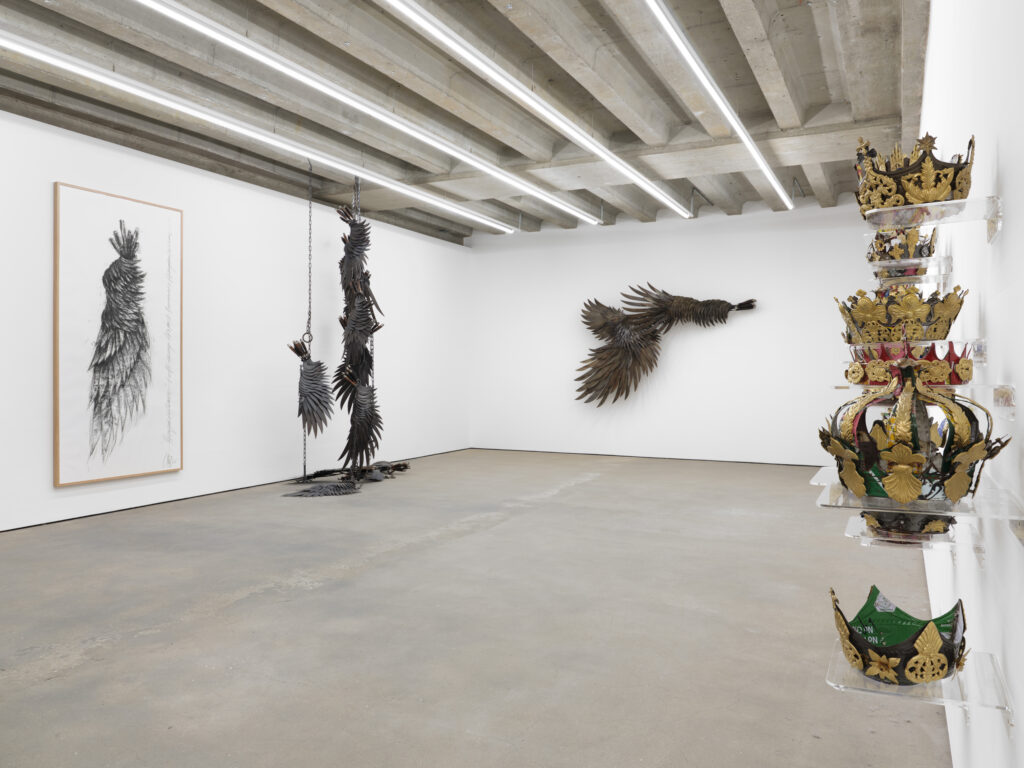
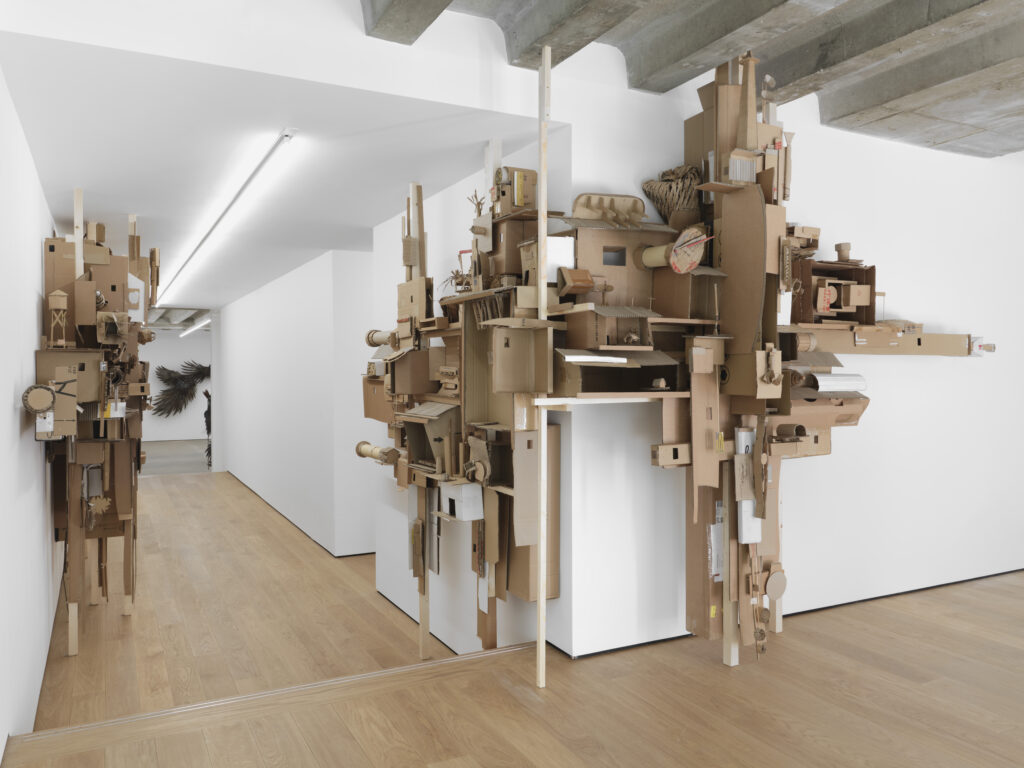
Installation views of Isabel and Alfredo Aquilizan, Ellipsis, Ames Yavuz London, 2025, photographed by Eva Herzog.
What was it like to first encounter Isabel and Alfredo Aquilizan’s work?
Aniway Aquilizan, Daughter and Collaborator:
It’s a funny question to answer because I grew up witnessing my parents work on something every day… Nanay [Mom] likes to say that we can’t really separate our lives from our art practice… I think one of the earliest works I remember is In God We Trust [a jeepney emblazoned with biblical phrases and prison tattoo imagery in stainless steel metalwork]. As a five- or six-year-old little girl, I enjoyed the work as a playground, not really knowing the significance of the incarcerated people’s tattoos which took the form of religious iconography. I was engrossed by the pimped-out Jeep, with its in-built siopao [Filipino steamed bun] heating cabinet, playing with my siblings…

In God We Trust was exhibited as part of the 50th Venice Biennale in 2003. Isabel and Alfredo Aquilizan (in collaboration with jeepney makers), Project M201: In God We Trust, 2003, stainless steel, sound, video, domestic objects, decals, dimensions variable.
Michelangelo and Lourdes Samson, Collectors:
We first encountered their work in the 2008 Singapore Biennale, an outdoor installation of rubber slippers perched atop bamboo poles. What struck us was how these humble objects could be transformed into art that spoke to us about our own experience as migrants and as fellow Filipinos. Isabel once told me that their art practice is less about the object on view but more about their engagement with the site, their engagement with the materials, and the engagement with the community which creates layers upon layers of meaning.
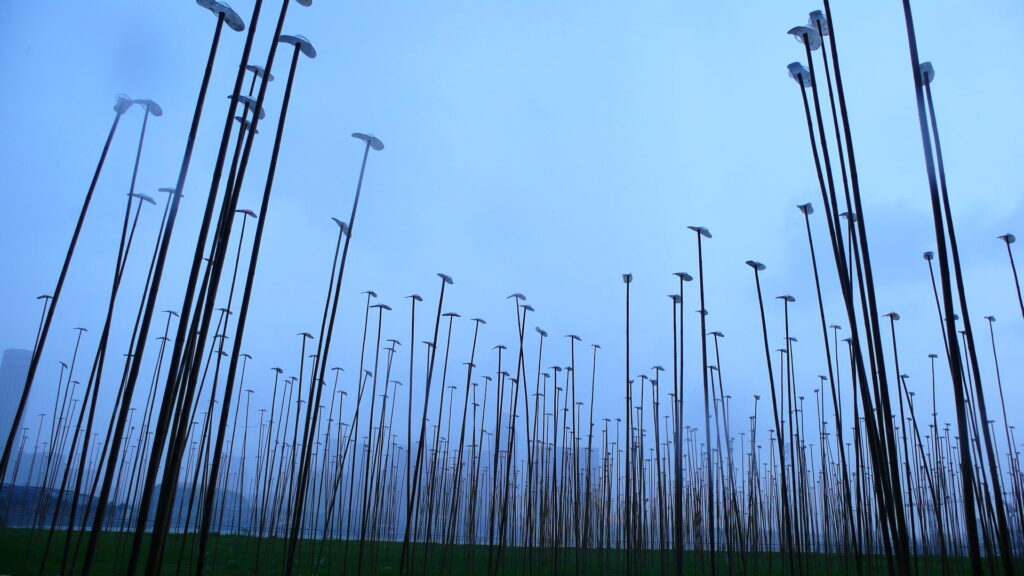
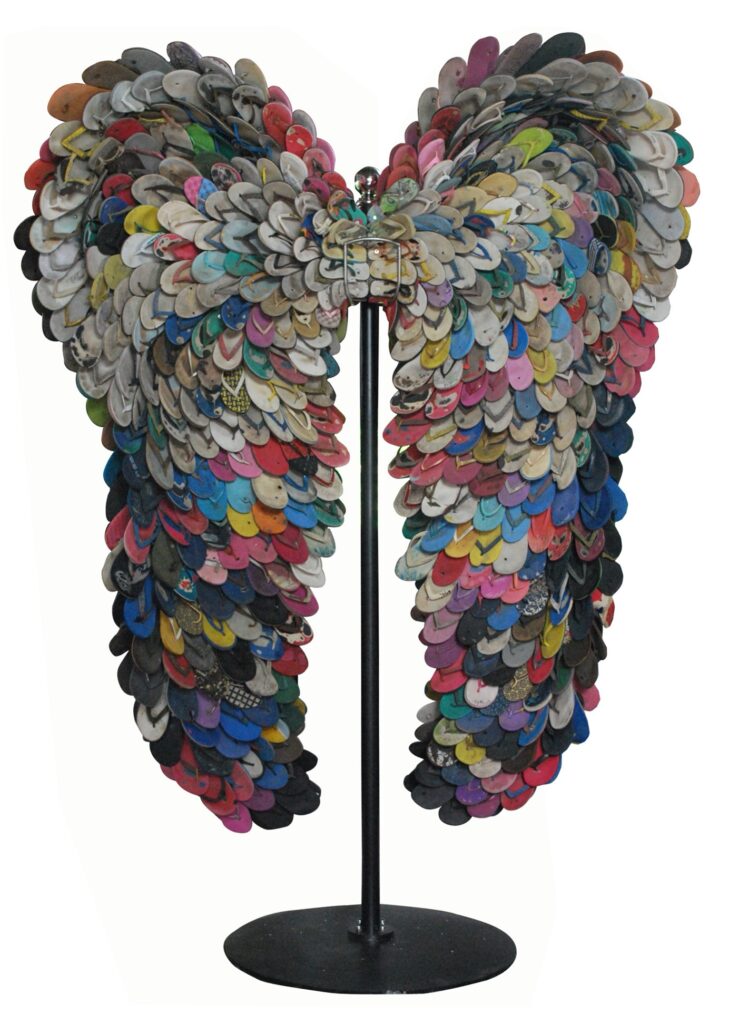
Left: Installation at Central Promontory Site for the 2008 Singapore Biennale. Isabel and Alfredo Aquilizan, Flight, 2004-2008, 4000 rubber thong slippers, bamboo, wind harp, courtesy of the artists; Right: Isabel and Alfredo Aquilizan, Last Flight, 2009, rubber slippers, 275 x 198 cm.
Sue Cato, Collector:
The first work of [the Aquilizans] that I saw were their extraordinary institutional-scale self-portraits, Foreign Landscape Puzzle, based on their passport photos and realised with thousands of jigsaw puzzle pieces. Learning about those works and their practice, those works were a searing encapsulation of some of the forces driving their practice — an intense exploration of identity, community, migration and displacement.
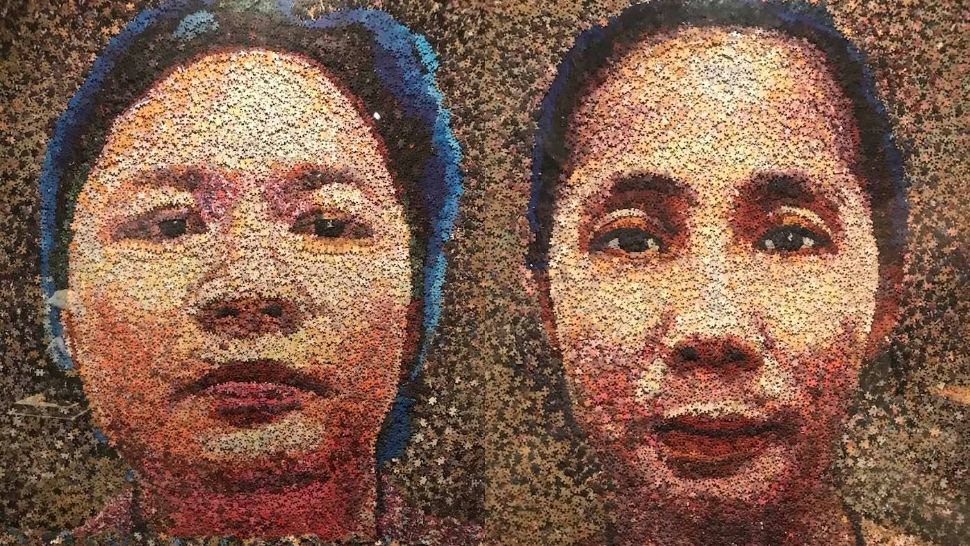
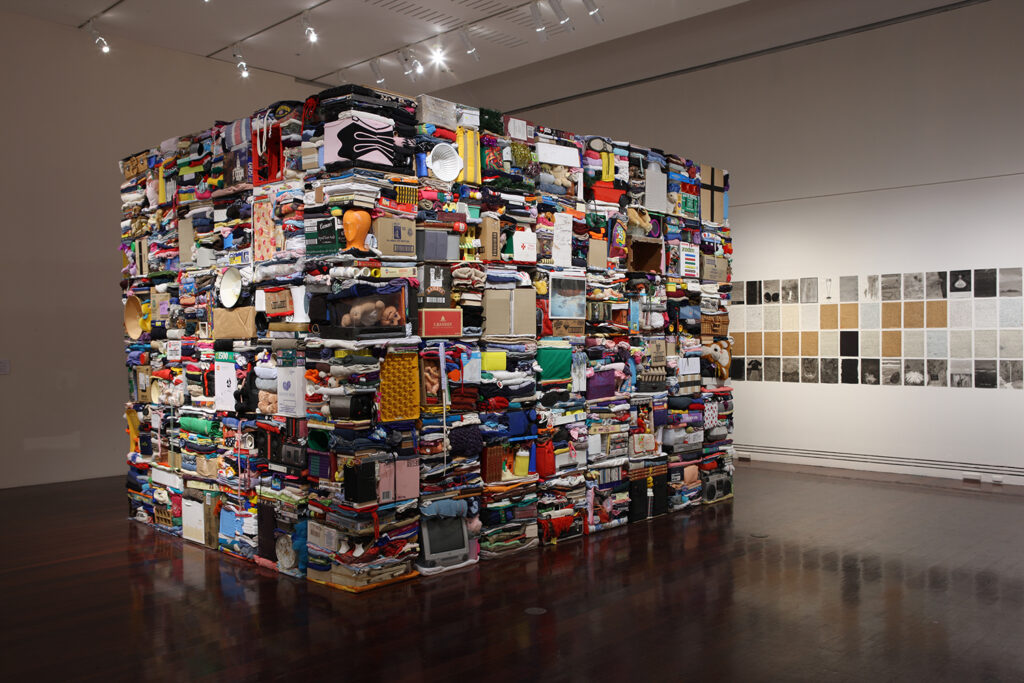
Top: Isabel and Alfredo Aquilizan, Foreign Landscape Puzzle, 2010-11, jigsaw puzzle pieces, 179 × 159 cm each. Courtesy of the artists; Installation view of Isabel and Alfredo Aquilizan at 2008 Adelaide Biennial of Australian Art: Handle with Care, Art Gallery of South Australia, Adelaide, photographed by Saul Steed, courtesy of the artists.
Can you describe your experience of working with the Aquilizans?
Jessica Shaefer, Executive Director, Bolinas Museum:
I had the great pleasure of working with the Aquilizan family on a massive site-specific installation… After diligently sourcing a large amount of discarded cardboard from around the offices and facilities, the artists collaborated with employees and members of local communities to create sculptures from the cardboard, resulting in a powerful, collectively-shaped artwork that evoked ideas of home, flight, and migration. In order to install the steel-framed piece, which weighed hundreds of pounds, the team had to figure out how to … lift the work piece by piece to … the ceiling, where it attached to dozens of thick cables precisely measured to the artists’ specifications in order to create a sense of both heft and flight.
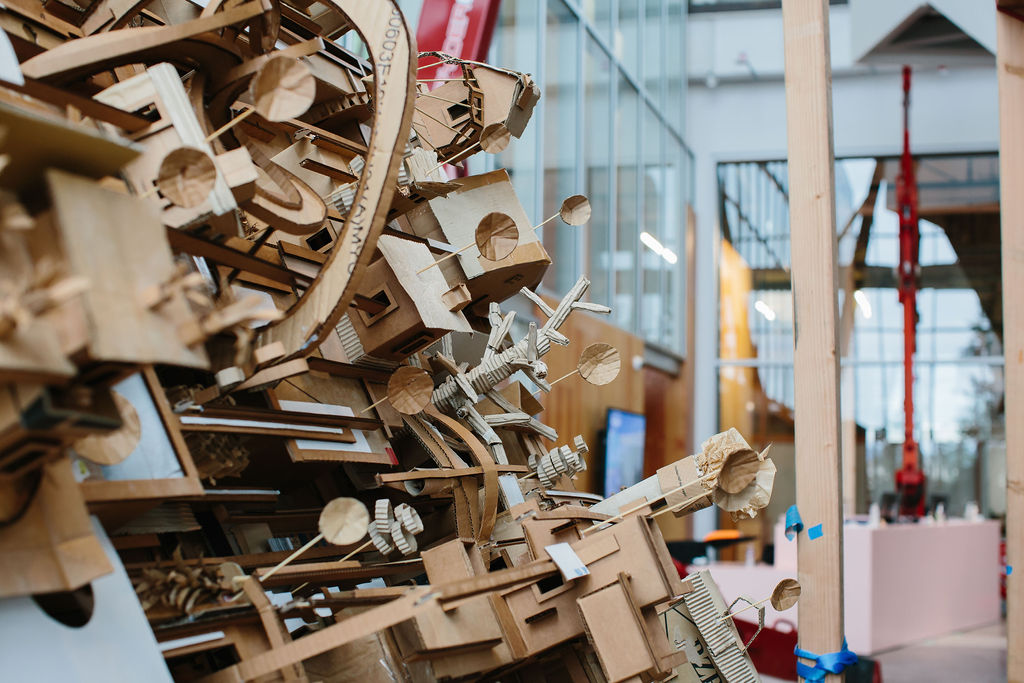

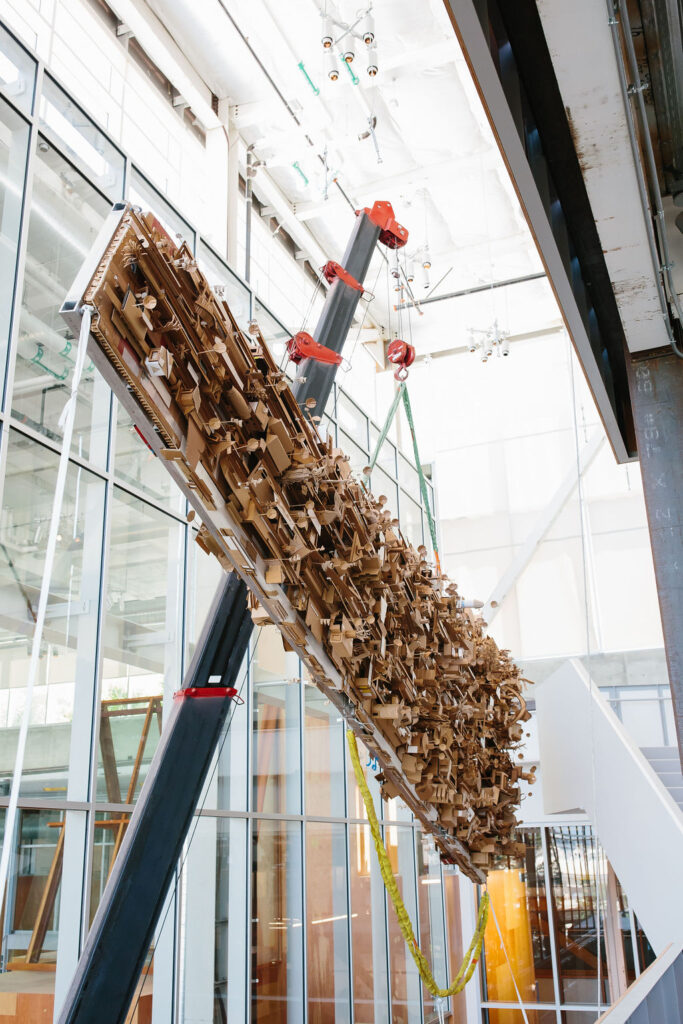
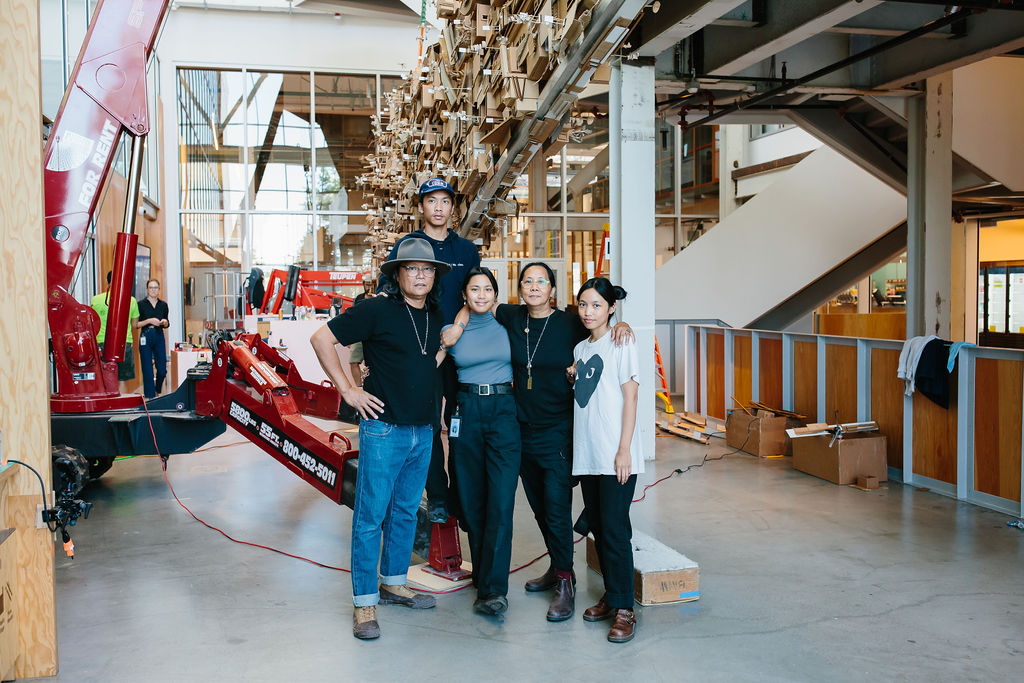
Installation process shots from Isabel and Alfredo Aquilizan’s commission for the Meta MPK 21 Building in Menlo Park, 2019, photographed by Mariah Tiffany, courtesy Facebook Art Department; Isabel and Alfredo Aquilizan with Leon, Aniway and Amihan Aquilizan, 2019, photographed by Mariah Tiffany, courtesy Facebook Art Department.
Justin Paton, Head Curator of International Art, Art Gallery of NSW:
No one makes a house a home like Isabel and Alfredo Aquilizan. The cardboard construction site they established in the weeks prior to our opening [of Sydney Modern] was the best christening of a new building imaginable — ever growing, ever intensifying, a true family affair, backdropped by music, running days and often nights, and finally lofting ceiling-wards to become From This Place, [shown in ‘Dreamhome: Stories of Art & Shelter’ at the Art Gallery of NSW, 2022–23].
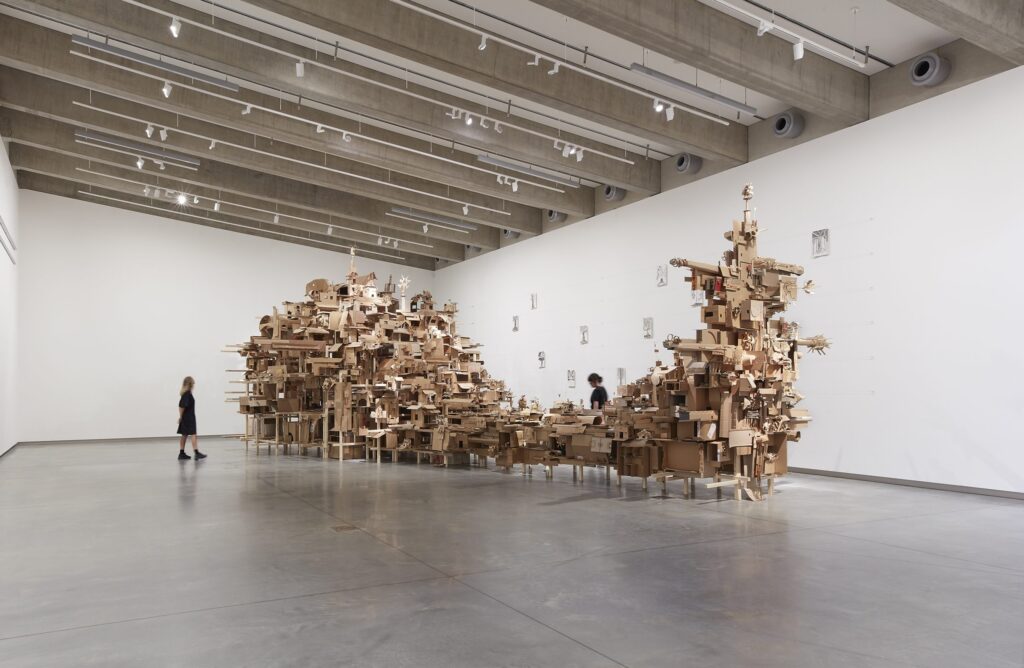
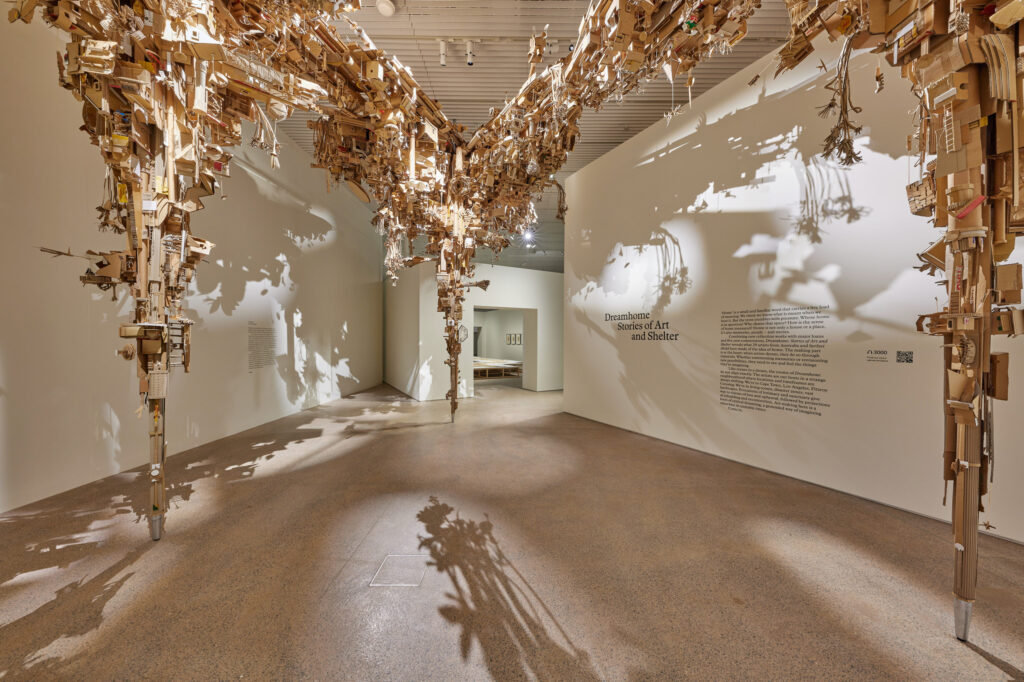
Top: Installation view of Isabel and Alfredo Aquilizan, REFLECTIONS / HABITATIONS, 2025, cardboard, glue, laminated pine timber, steel cable, paper, aquarelle watercolour pens at Thinking together: Exchanges with the natural world, Bundanon, 2025, photographed by Zan Wimberley; Bottom: Installation view of Isabel and Alfredo Aquilizan, From This Place, 2022, Sydney Modern, 2022, courtesy of Art Gallery of NSW.
Rhana Devenport, Former Director of the Auckland Art Gallery & Art Gallery of South Australia:
In 2011, we brought Isabel and Alfredo to New Plymouth in Aotearoa New Zealand for a residency towards an exhibition I curated, ‘Stealing the Senses’ at Govett-Brewster Art Gallery. The work they created, Passage (The Eighth Fleet), still pulls my heartstrings. They had quickly established a drop-in workshop space in an empty shopfront in the main street (Queen St, as is often the case!) where locals, children, school groups, families, office workers and farmers formed an open flow of excited makers working in easy laughter-filled coalescence to construct a myriad of sea-faring vessels from repurposed cardboard. The work’s inspiration was the Austronesian migration legend of the ‘Great Fleet’ of seven voyaging canoes that is said to have brought Mãori from Hawaiki to Aotearoa in the mid 14th century. Throughout Polynesia, canoes were often inverted to form shelter on shore. Installed in the soaring height of the gallery (a repurposed movie theatre), this engaged community making continued each day for the duration of the exhibition beneath the colossal, hoisted and upturned vessel. What I value most about Isabel and Alfredo is the compassion and sensitivity in their engagement with community and place, their boundless imagination when it comes to the possibility of material transformations of space, and their sustaining empathy towards humanity.
What to you is the essence of the Aquilizans’ practice?
Tobias Berger, Curatorial Director, Serakai Studio and Strategic Advisor, Tanoto Art Foundation:
Few artists have interwoven their own lives into their art as much as Isabel and Alfredo Aquilizan. A work deeply rooted in an immediate, sometimes intimate family and cultural experience. A semi-nomadic life of raising five children in a global world and making it work (in every sense of the word) in the many layers of today’s contemporary art system, which luckily welcomes cultural signifiers like sickles, linen and slippers as much as it embraces giant oversized cardboard sculptures, that dwarf any exhibition space.

Isabel and Alfredo Aquilizan, Left Wing Project (Belok Kiri Jalan Terus) Wing 7, 2017-2018, hand-forged metal, wood, weighing scale, hemp sack, rice, rope, 100 x 360 cm.
Aaron Seeto, Deputy Director, Hirshhorn Museum and Sculpture Garden:
The artistic practice of Isabel and Alfredo Aquilizan is deeply rooted in their personal histories and cultural contexts, revealing a rich interplay between memory and community… These are works that embody a sense of longing and exploration, reflecting a desire for movement and discovery while grappling with the constraints of our surroundings… The Aquilizans’ work transcends mere aesthetics, becoming a conduit for dialogue about shared experiences and connections to place and history. This reflective practice emphasises the importance of understanding art as a living, evolving entity — one that responds to the complexities of the human experience.

Isabel and Alfredo Aquilizan, Caged, 2023, reclaimed teak wood, bamboo, sound, 100 x 1000 x 200 cm, courtesy of the artists.
Diana Campbell Betancourt, Curator and Artistic Director of 2025 Bukhara Biennial:
Isabel and Alfredo have an incredible collaborative practice that involves communities … making family out of strangers through their making process that creates a sense of belonging in a world of migration. They create a sense of wonder in things that are part of an everyday migrant experience – elevating them into beautiful markers of shared human experiences.
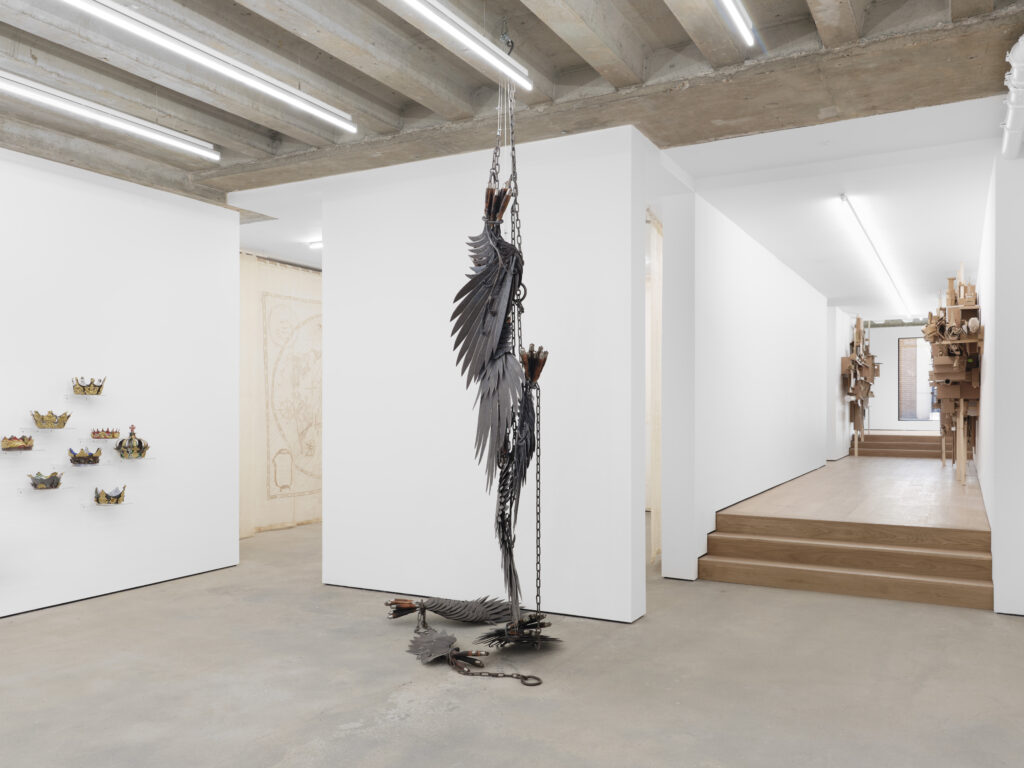
Installation view of Isabel and Alfredo Aquilizan, Ellipsis, Ames Yavuz London, 2025, photographed by Eva Herzog.
Ellipsis is on view at Ames Yavuz London from 1 May to 28 May 2025.